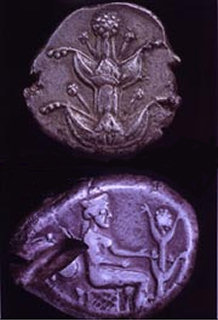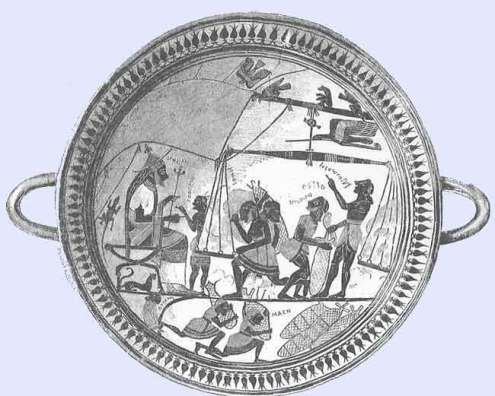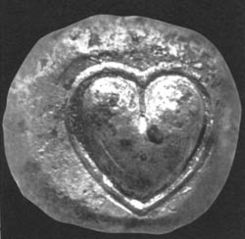Weasel Coffee
Known as Kopi Luwak throughout much of Southeast Asia and popularly translated to English as weasel or civet coffee, this gourmet beverage is brewed from beans that have been eaten and defecated by the Asian palm civet.

The Asiam palm civet is not a member of the weasel family, but is commonly referred to by the Vietnamese word meaning weasel.
Palm civets have a taste for the ripe fruit of the coffee plant, known as coffee cherries. While the flesh of the fruit is broken down by the civets’ digestive tracts, the beans contained within the berries pass through the animals intact.

Clumps of coffee beans that have passed through civets.
The civets’ contribution to the palatability of the resulting beans is twofold. Since these animals are drawn to the ripest and most healthy coffee berries, their excrement is filled with the choicest beans. Secondly, the unique combination of digestive enzymes that the coffee beans are exposed to inside the civets reduces their natural bitterness. Washed thoroughly and then brewed as a light roast, these beans are said to produce some of the most delicious coffee in the world. The flavor is widely described as “sweet and smooth”.

Due to the scarcity and desirability of the beans, Kopi Luwak is often sold for several hundreds of dollars a pound, making it the world’s most expensive coffee.
Connoisseurs point out that, in addition to possessing a notably reduced bitterness, Kopi Luwak displays a complex bouquet of flavors not found in any other type of coffee. This is caused by the civets’ digestive enzymes penetrating the coffee beans and interacting with certain proteins contained within. The resulting palatability is a serendipitous side effect.
The use of animals to identify, gather, or alter morsels of food that are subsequently considered gourmet is seen in several other modern practices. Pigs used to locate truffles, hounds that aid bird hunters, and bees that convert flower nectar into honey all play an important role in human culinary tradition. But none aside from Asian palm civets can brag that gastronomes pay hundreds of dollars for sacks of their scrumptious shit.
Some Further Reading:
An article about the coffee from a Vietnam travel guide
An online shop selling weasel coffee beans, for those curious enough to try it for themselves
An article about an Australian café that serves Kopi Luwak for $50 a cup
The Lost Panacea of Silphium
 Native to the ancient Greek colony of Cyrene (located in modern day Libya), Silphium (also known as laser) is an extinct plant that, in its heyday, was one of the most treasured medicinal resources of the ancient world. Employed by cultures all around the Mediterranean, Silphium was used as a spice, a cure-all medicinal remedy, a form of birth control, and an agent for pregnancy abortion. Famed scholars ranging from Pliny the Elder to Herodotus to Theophrastus all wrote of Silphium’s legendary potency. Despite its widespread popularity, Silphium allegedly refused to grow anywhere aside from Cyrene. The colony became so closely identified with the plant that it appears on the settlement’s coins.
Native to the ancient Greek colony of Cyrene (located in modern day Libya), Silphium (also known as laser) is an extinct plant that, in its heyday, was one of the most treasured medicinal resources of the ancient world. Employed by cultures all around the Mediterranean, Silphium was used as a spice, a cure-all medicinal remedy, a form of birth control, and an agent for pregnancy abortion. Famed scholars ranging from Pliny the Elder to Herodotus to Theophrastus all wrote of Silphium’s legendary potency. Despite its widespread popularity, Silphium allegedly refused to grow anywhere aside from Cyrene. The colony became so closely identified with the plant that it appears on the settlement’s coins.

Silphium, here seen on Cyrene's coins, was the colony's chief export. The plant was notoriously resistant to cultivation, and is believed to have been harvested to extinction within the first few centuries AD.
Silphium was so strongly desired by various ancient civilizations that it was, at times, valued above currency. With some Romans contending that the plant was a gift from the god Apollo, its extinction was considered a great tragedy. Pliny even wrote that the last known Silphium plant was given to the Roman Emperor Nero himself.

An artifact from the 6th century believed to depict King Arcesilaus II of Cyrene overseeing the weighing of Silphium.
The Egyptians shared the Romans’ veneration of the plant, associating its with human love and sexuality. The Egyptian glyph signifying the heart portion of the soul, in fact, may have been meant to picture the seed of the Silphium plant. This character, known to the Egyptians as Ib, is likely the origin of our modern heart symbol.

Here is an ancient Cyrene coin bearing the image of a Silphium seed. Its likeness both to the Egyptian Ib and to the modern heart symbol is striking.
While the world has been without Silphium and its powers for well over a millennium, our modern culture still bears its mark. Every time a love-dazed youth carves a heart into a tree or inserts a whimsical, heart-shaped emoticon into an online conversation, the plant that once commanded a king’s ransom is winking at us from the ghostly recesses of the Earth’s past. Like the Dodo bird that gave us an insult implying stupidity or the dinosaur that inhabits every child’s imagination, Silphium’s potency is strong enough to overcome the silencing power of extinction itself.
Some Further Reading:
Some information about Silphium’s possible use as birth control and an abortifacient
An article entitled “Abortion in the Ancient and Premodern World”
An article about ancient methods of measurement, including brief mention of Silphium from Cyrene
An essay addressing the five parts of the Egyptian soul, including Ib